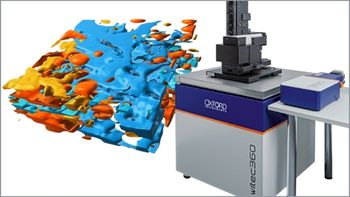
Tryptophan Networks Investigated Using Ultraviolet Superradiance
Howard University scientists recently analyzed tryptophan (Trp) networks and conditions under ultraviolet superradiance.
In a recent study published in the Journal of Physical Chemistry B, scientists from Howard University in Washington, D.C., investigated tryptophan (Trp) networks under ultraviolet superradiance (1). Superradiance can be described as the cooperative, spontaneous emission of photons from a collection of atoms, and in this experiment, these photons create ultraviolet light (2).
Trp is the only amino acid with an indole moiety, which makes it an ideal precursor for metabolites involved in biological signaling. Notably, Trp is most compatible with kynurenine and the neurotransmitter serotonin, which share Trp’s highly aromatic character. Given its natural occurrence in proteins, its strong ultraviolet absorption, and its significant absorption emission Stokes shift (which is highly sensitive to protein, solvent, and electrostatic environments), Trp is believed to be an ideal fluorescent reporter of biomolecular dynamics. This has led to Trp being used in various ways, including as a reporter of the Stark effect in photoactivated proteins, to monitor protein folding kinetics, and as a probe for conformational ensembles of proteins in solution, among other applications. Trp networks are typically thought to be ubiquitous in biological systems, forming diverse architectures in transmembrane proteins, cytoskeletal filaments, subneuronal elements, photoreceptor complexes, virion capsids, and other cellular structures.
Trp residues are often found in transmembrane proteins at the lipid–water interface. When multitryptophan proteins, such as myoglobin, hemoglobin, and cytochrome-c oxidase, have been previously studied, it has been found that large and organized Trp networks occur in these transmembrane proteins, receptors, and other macromolecular aggregates, lending essential structural and functional integrity to living systems. Namely, microtubules (MTs) are macromolecular aggregates of tubulin dimers (TuD) that represent mesoscale networks of Trp residues. MTs themselves are spiral-cylindrical protein structures that self-assemble to enable cellular reorganization and remodeling for mitosis, differentiation, transport, habitat exploration, and apoptosis. Further, they have been shown to reorganize structurally under ultraviolet (UV) excitation.
In this study, the scientists analyzed the cooperative effects induced by UV excitation of various biologically relevant Trp mega-networks. The scientists said this will provide insight into novel mechanisms for cellular signaling and control. According to the scientists, “Our theoretical analysis in the single-excitation manifold predicts the formation of strongly superradiant states due to collective interactions among organized arrangements of up to > 105 Trp UV-excited transition dipoles in microtubule architectures, which leads to an enhancement of the fluorescence quantum yield (QY) that is confirmed by our experiments” (1).
This article shows the essential features of Trp chromophore networks in large aggregates of proteins. By analyzing the coupling with the electromagnetic field of mega-networks of Trp present in these biologically relevant architectures, the scientists found the emergence of collective quantum optical effects, namely, superradiant and subradiant eigenmodes. Additionally, exceptionally bright superradiant states in these biocomplexes may facilitate the absorption and energy transfer of UV photoexcitations in intensely oxidative environments, where electronically excited molecular species emit light quanta in this wavelength regime.
“Superradiant states promoting enhanced QYs for large biological architectures may serve a photoprotective role in pathological conditions such as Alzheimer’s disease and related dementias since an enhanced QY implies that a greater portion of the photonic energy absorbed by certain protein aggregates is re-emitted rather than assimilated by those complexes,” the scientists wrote (1). Though more research needs to be done, the findings here indicate the potential found in utilizing Trp networks and what they can be capable of in various circumstances.
References
(1) Babcock, N. S.; Montes-Cabrera, G.; Oberhofer, K. E.; et al. Ultraviolet Superradiance from Mega-Networks of Tryptophan in Biological Architectures. J. Phys. Chem. B 2024, 128, 17, 4035–4046. DOI:
(2) Scully, M. O.; Svidzinsky, A. A. The Super of Superradiance. Science 2009, 325 (5947), 1510–1511. DOI:
Newsletter
Get essential updates on the latest spectroscopy technologies, regulatory standards, and best practices—subscribe today to Spectroscopy.




